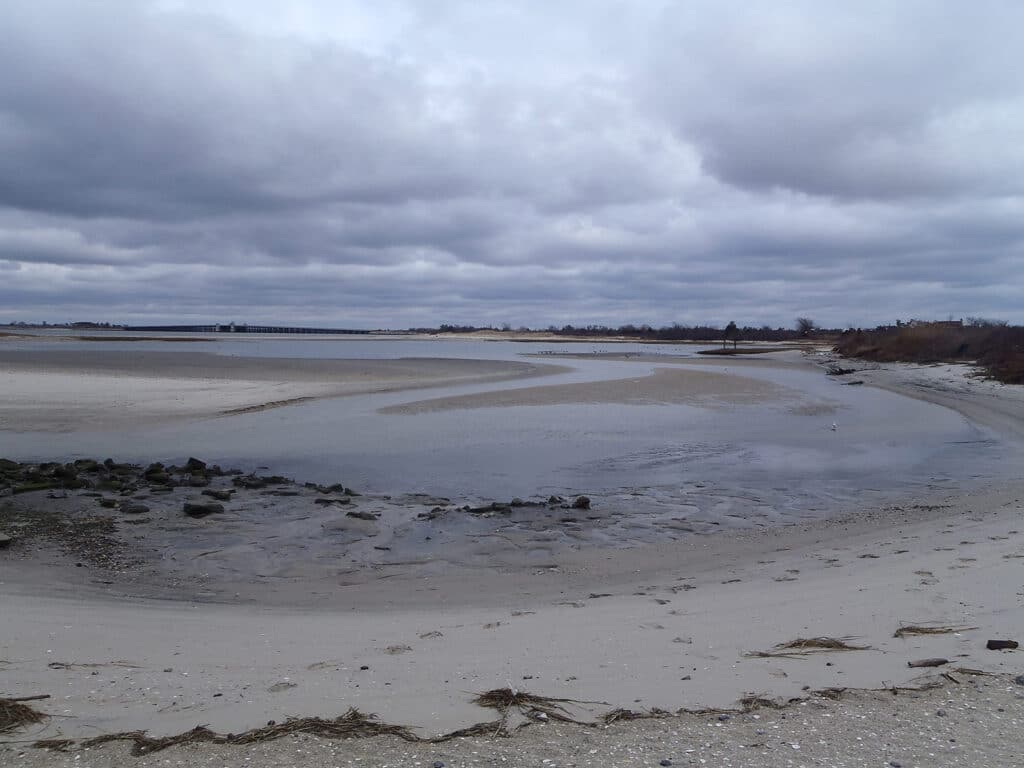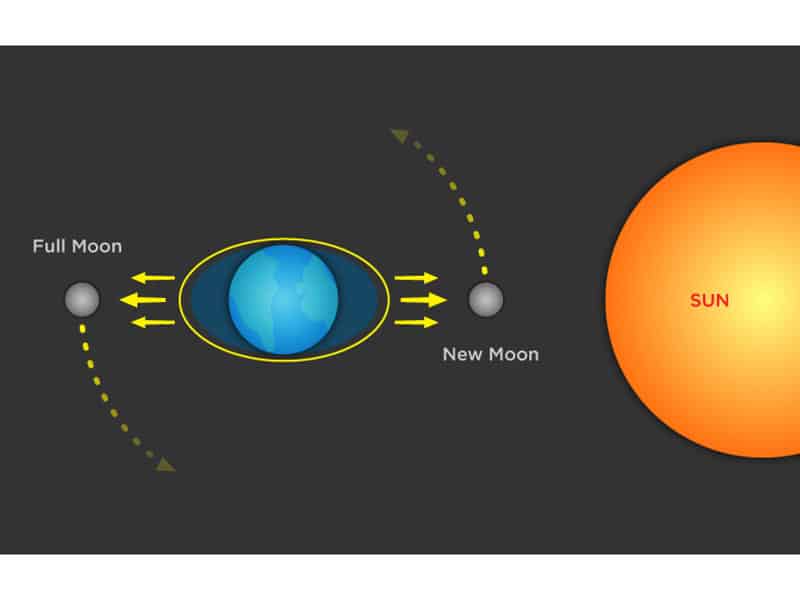
In a marine environment, everything is controlled by the rising and falling of the tides. The flooding and ebbing covers, or reveals, underwater real estate, creating a different habitat every 15 minutes. It is this constant movement that dictates every facet of marine life, both aquatic and terrestrial. It affects everything from invertebrates to fish, and even certain bird species.
What Are Tides?
Simply put, tides are the rising and falling of the ocean’s waters. In North America, and most areas other than a small swath of the globe centered around the equator, we experience semidiurnal tides. This means we have a high tide twice a day. In our region, this translates to a high tide approximately every 12 hours and 25 minutes. This is because the tide’s greatest influence is the moon, and the moon rotates about twelve degrees a day, or about one rotation a month. Therefore the tidal day is 24 hours and 50 minutes, as opposed to the 24 hours of the solar day, thereby accounting for the differences in tidal peaks on a day to day basis.
What Causes Tides to Occur?

Tides occur because of the gravitational attraction between the Earth, moon and sun. The Earth’s gravity creates centripetal force, pulling inward on its surface. But at the same time, the centrifugal force created by the spinning of the Earth is pushing water outward and the moon’s gravity is pulling up on the Earth.
Although this force affects the entire globe, the terrestrial parts of our world are too dense to move in any way we can sense without sophisticated instruments, but this movement is very pronounced on the water. There is a high tide on the side of the Earth facing the Moon, due to the moon’s gravitational pull. But there is also a high tide on the opposite side of the Earth, which is related more to the centrifugal force created by the Earth’s rotation than the moon’s gravity.
Twice a month, the Earth, moon and sun move into alignment. When the moon is opposite the sun, we can see it in its entirety — a full moon. When the moon is closest to the sun, we can’t see it; this phase is known as the new moon. When these two events occur, the sun’s and moon’s gravities work in concert with one another, causing an unusually high, or spring, tide. Spring refers not to the season, but to “jump” or “burst forth” as this type of tide seems to. On these days not only is the high tide higher than normal, the low tide is lower. Spring tides are typically 20 percent higher than average.
When the sun and moon are at right angles to one another, they create an especially weak tide, known as neap tides. The term neap is derived from an antiquated word meaning “inactive.” Neap tides have extremely low ranges because the sun is pulling water away from the high tide created by the moon. These tides occur during the first and third quarter of the moon. They are usually 20 percent lower than typical tides.
What is a King Tide?

You may have heard extraordinarily high tides referred to as King tides. This term grows more popular each year, and denotes higher than normal high tides that occur during full and new moon phases, also known as a spring tide.
Why Are Tides Lower in Winter?
There are seasonal variations with our tides. Again, this relates to the sun as well as the moon. In the winter months our hemisphere features lower highs and lower lows. This occurs because the Earth is in an elliptical orbit around the sun. That is, it isn’t always an equal distance away. In the summer, the Earth is in aphelion, meaning its orbit places it farthest away from the sun. Therefore it has the least pull on the Earth, having less effect on tidal bulge. In the winter the Earth is in perihelion, being closest to the sun. Thus the sun has a greater effect, flattening the moon’s influence.
What is Slack Tide?
At the top and bottom of the tidal peaks there exists a short interlude called slack tide. This is the brief period when there is little to no tidal current. So the water appears to be standing still until it begins to ebb or flow again. These periods are typically very short, only lasting about an hour.
Of course there are other factors that can slightly alter the timing of tides. While there is high tide approximately every 12 hours, this can be hindered, or sped up, by a strong wind. For instance, if there was a bay with an inlet facing to the west, an east wind would hasten the water exiting the bay. Conversely, a west wind would slightly delay the peak of low tide. A strong wind can also alter the height of a tide.
Why Do Some Areas Have Bigger Tide Swings?
Why do certain areas have a larger variation in tidal heights? For instance, why does the Long Island Sound have a swing of 7 to 11 feet while the Atlantic oceanfront has a range of 4 feet and only about a foot and a half offshore? The answer is surprisingly simple and lies in variations in geography. It’s not the volume of water that changes; it’s the size of the container. It’s like putting 10 milliliters of water in a 25 mL container versus putting the same amount of fluid in a 100 mL container. The levels are higher in the smaller container even though it’s the same quantity of liquid.
These changes in geography are also responsible for the slight variations in the peak times of a tide. While a bay may be large and open, it could have a narrow bottleneck at the entrance. Therefore it takes longer for that expanse to fill and empty. Water always seeks its own level, so the interior of the bay will attempt to reach the same level as the surrounding waters.
Tides and Fishing

What does this all mean to the average angler? Although it represents just a small piece of the huge puzzle we call fishing, paying attention to tidal flow can lead to more successful outings. Although the preferred tide cycle to fish varies from species to species, the movement of bait along with the flow of water can stimulate the urge to feed.
Most of our favored game fish are strong swimmers, so the currents created by these forces typically have little effect on them. But many favorite prey items lack the stamina to fight these currents, so these gamesters will set up in an area that will flush bait to them like trout pointing upstream picking off mayflies. Flounder will set up in the down current side of a ridge, staying just out of the flow while allowing bait to float by just overhead. Redfish will take a position at the mouth of a tidal creek and enjoy the smorgasbord that is flushed out of the marsh. Blackfish will choose a hole on the up-tide side of a piling enjoying the crabs that wash by.
In addition to all this, the tide can also alter the mood of predatory fish. That is it can turn the non-feeding, or neutral fish, on by providing an influx of bait streaming past them and creating a sense of urgency. Those same fish that were spread out across the flat lazily finning about during high slack will sense the dropping water levels. Perhaps the water level will drop so significantly that a fish’s favored boulder field will be high and dry, forcing them and their forage to be concentrated in a deeper trough creating a feeding frenzy. If you pay close attention to the tides, and its effects on gamefish, you’ll experience more bends in your rod.








